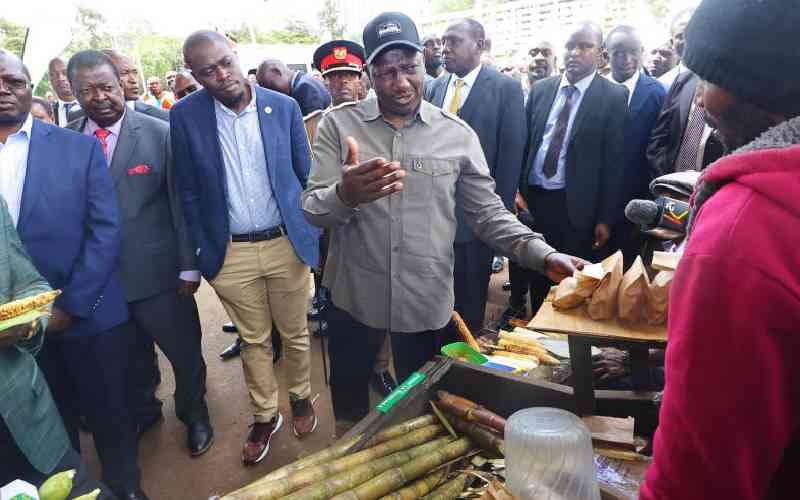The renewed armed conflict among feuding pastoralists in Kerio Valley that has claimed over 10 lives in the past three months poses a threat to the gains made by the peace caravan spearheaded by religious and Government officials.
The retaliatory attacks between the Pokot and Marakwet communities are impacting negatively on the socio-economic status of the two communities as traders and school-going children flee insecure areas along River Kerio, a common boundary for Elgeyo Marakwet and Baringo Counties.
The peace initiatives by elders, community-based organisations, youth, women groups and the provincial administration in Samburu, Elgeyo Marakwet, Baringo, West Pokot, Isiolo and Laikipia counties helped to reconcile pastoralists and propel development in the region. It led to reduced incidents of cattle raids and the once dominant semi-arid region began experiencing economic transformation.
The objective of the peace caravan was desirable as it facilitated dialogue between communities living along the Kerio Valley. But the latest killings between the Marakwet and the Pokot in the last three months erode gains made to restore law and order and foster development aimed at improving the livelihoods of the communities.
The threat to the prevailing peace calls for political willingness among leaders to seek lasting peace. Leaders from the warring pastoral communities need to be honest and have a common voice during peace forums, especially when they retreat to their respective areas of jurisdictions.
It is unfortunate that in most cases, leaders in the Kerio Valley incite their communities against each other for selfish gains. This is evident when ultimatums to surrender illegal firearms in their possession are given, leaders of the targeted communities rally behind their ‘people’ and resist the orders.
There are indications that the security situation in the region is worsening and leaders must go back to the drawing board to come up with new strategies. There is urgent need for leaders to come up with home-grown remedies to contain the cattle-rustling menace in various parts of North Rift region.
It is evident that past attempts by the Government in Pokot, Samburu, Turkana, and Baringo to wipe out illegal arms have failed and banditry and cattle rustling still thrive.
The multi-faceted dimensions of the problem compound the logistical challenges of any realistic disarmament strategy. The North Rift region for instance requires four governments – Kenya, Uganda, Ethiopia and Sudan – to orchestrate a finely coordinated police-cum-civil society offensive, or to marshal the overwhelming force required for disarming the groups within their respective borders.
In both scenarios, security forces and peacemakers alike can expect sustained opposition on the ground. The State armed some of these groups in the first place, resulting in other communities acquiring guns. Both facets of the process attest to the failure of regional governments to defend their citizens on the margins.
Governments have sabotaged their own monopoly of the modern weaponry now in circulation, and other factors of internal politics and cross-border real politics complicate regional co-operation on this score. Unsettled conditions in southern Sudan and the warlords ruling Somalia would render the impact of regional disarmament only temporary even if successful while democracy and elections add a new element of volatility to the mix.
The efforts by Kenya police to enforce the law only aggravate the situation, sometimes leading to vicious gun battles, with the porous borders making it easy for cattle rustlers to flee to neighbouring countries. But following the acquisition of firearms through the border with the neighbouring countries by communities living along the border areas, the traditional cattle raids have changed to a full-fledged war that has left behind scars of bitterness and hatred among the warring communities.
The issue is that unlike in the past, pastoral communities are no longer using the traditional bows and arrows. They are now using AK 47, G3, mortars and even grenades, among other sophisticated weapons.
 The Standard Group Plc is a
multi-media organization with investments in media platforms spanning newspaper
print operations, television, radio broadcasting, digital and online services. The
Standard Group is recognized as a leading multi-media house in Kenya with a key
influence in matters of national and international interest.
The Standard Group Plc is a
multi-media organization with investments in media platforms spanning newspaper
print operations, television, radio broadcasting, digital and online services. The
Standard Group is recognized as a leading multi-media house in Kenya with a key
influence in matters of national and international interest.
 The Standard Group Plc is a
multi-media organization with investments in media platforms spanning newspaper
print operations, television, radio broadcasting, digital and online services. The
Standard Group is recognized as a leading multi-media house in Kenya with a key
influence in matters of national and international interest.
The Standard Group Plc is a
multi-media organization with investments in media platforms spanning newspaper
print operations, television, radio broadcasting, digital and online services. The
Standard Group is recognized as a leading multi-media house in Kenya with a key
influence in matters of national and international interest.








